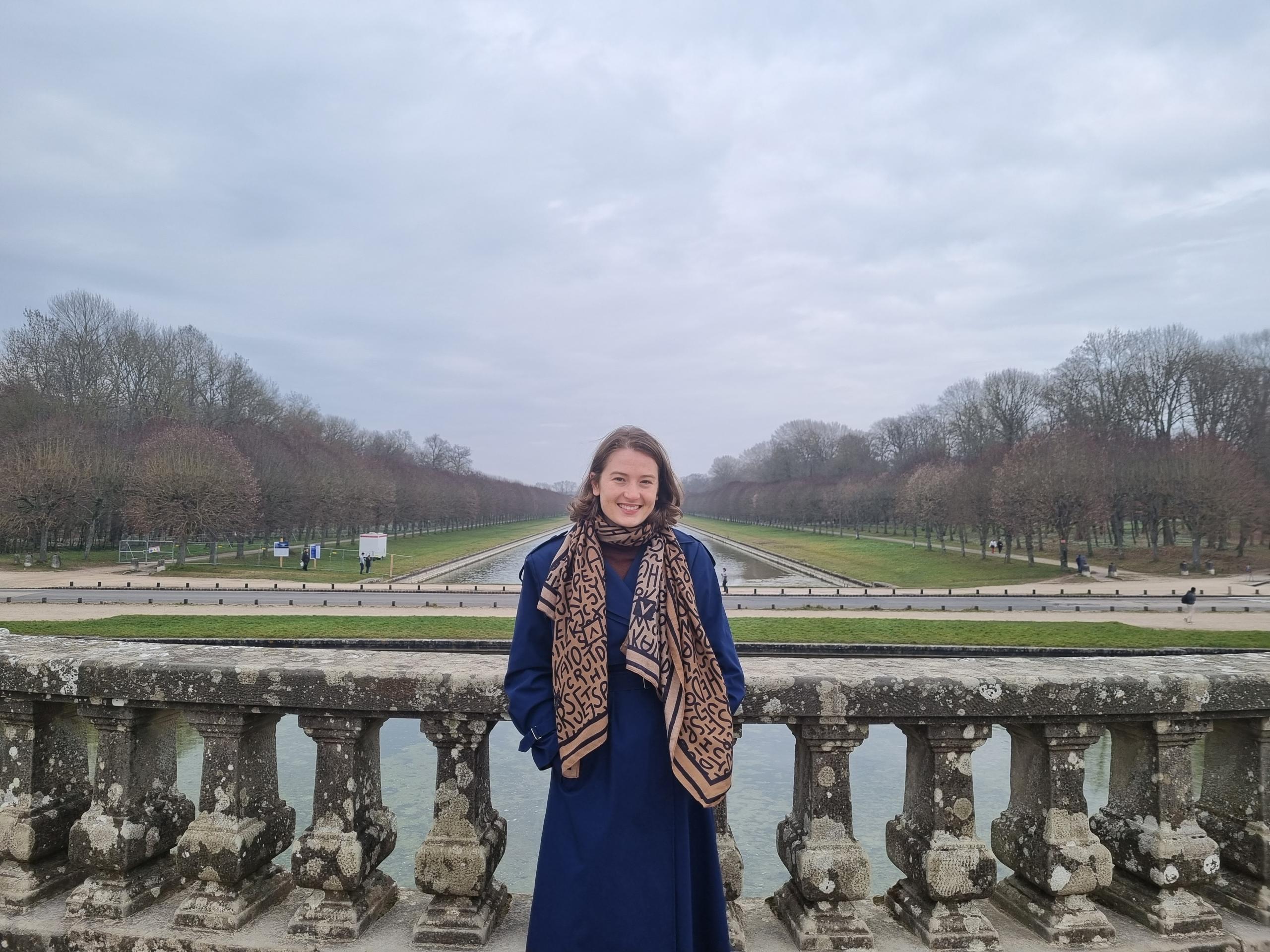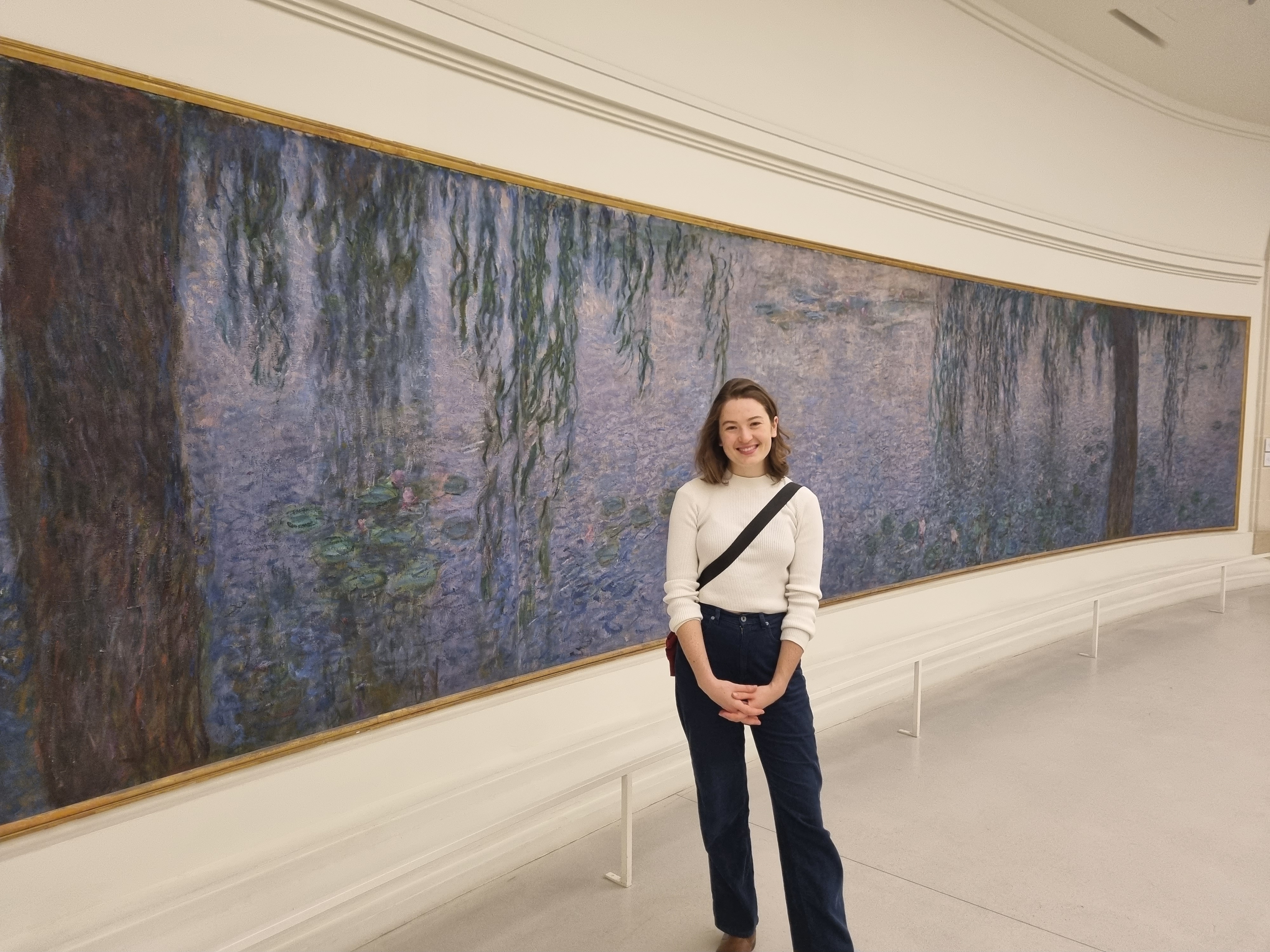
19th century art scholar Imogen King reports on her time in Paris
Imogen at the Château de Fontainebleau
My time at the Cité Internationale des Arts was an invaluable experience, one which deeply enriched my research, grew my enthusiasm for my work, and gave me the joys of immersing myself into the cultural and artistic treasure trove that is Paris.
I went to the Cité as a PhD student in the art history department at the University of Sydney. My work examines eighteenth-century French print culture, and in particular how women of the period related to and used prints. It explores women’s practices of print collecting, displaying, making, and patronising. As such, Paris was full of the archival sources I required to undertake my project. The most important site I made use of was the Archives Nationales which hold many of the inventaires aprés décès (estate inventories) of women of the period, these are documents that both relay what material items these women possessed, but also discuss how these materials were located within these women’s homes, as such they were an invaluable resource to the act of reconstructing the physical spaces and print objects these women interacted with. I also made great use of the Bibliothéque Nationale, and within it, the library of the Institut National d’Histoire de l’Art. These libraries, beyond their extensive collections of modern art historical writing, also contained rare volumes by artists, amateurs, and influential thinkers of the eighteenth-century, and a huge number of prints from the time as well. Happily for me, the Cité also neighbours the City of Paris’ own art historical library, the Bibliothéque Forney, which meant I was never more than a two minute walk away from a wonderful collection of writing.
Beyond books and prints Paris was a wonderful site to see art and extant architecture from the eighteenth century- allowing me to more deeply immerse myself in the visual culture of the period, and inspire my visual thinking and understandings. Architecture and the culture of interior display is of particular importance for the later parts of my thesis. As such alongside the usual suspects of the Louvre and Versailles, I also visited smaller museums such as the Museé Carnavalet, The Musée des Archives, and the Musée Cognacq-Jay which were supremely well situated from my location at the Cité, and valuable to the development of my work.
Finally, the experience of living at the Cité, beyond its ability to grant me access to museums, libraries, and sites around Paris, was also tremendously rewarding to live in as a space itself. I was able to meet with creatives from numerous and varied disciplines, architects, sculptors, painters, authors, performers and musicians. I was able to develop my thinking through discussions with people from all over the world, and feel enriched by the diverse and always exciting projects around me. The process of writing a thesis is often a solitary one, and the Cité was a wonderful conduit of connection, to people, to art, and to ideas. I found my time there both inspiring and restorative, and I am so incredibly thankful to all who facilitated my going.
Imogen King
The Fellowships are made possible thanks to the generous support of Nicholas Curtis AM and Angela Curtis.

Imogen at the Musée de l'orangerie
